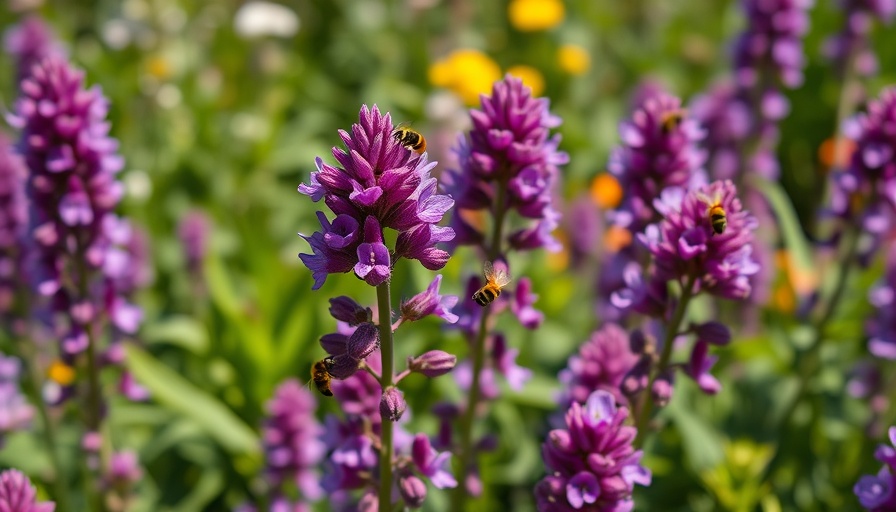
Unlocking the Power of Hyssop: A Versatile Garden Gem
Hyssop (Hyssopus officinalis) is a remarkable herb that not only beautifies your garden but also enhances your culinary adventures and offers numerous health benefits. Native to the Mediterranean region, this hardy perennial thrives across USDA zones 4-9, making it a favorite among gardeners in diverse climates.
Why Grow Hyssop in Your Garden?
Hyssop is an excellent choice for various gardening projects due to its attractive green foliage and vibrant flowers that bloom from spring to fall. These blossoms invite pollinators such as bees, butterflies, and birds, making your garden a bustling hub of wildlife. Moreover, its aroma and essential oils make hyssop a wonderful addition to your kitchen. Whether brewed as a tea or incorporated into recipes, its potential for enhancing flavors is impressive.
Cooking with Hyssop: Culinary Inspirations
The culinary versatility of hyssop is noteworthy, with uses extending from sweet to savory dishes. A strong hyssop tea can be enjoyed with honey for a soothing remedy for respiratory ailments. Its leaves can be added to soups, salads, and roasts, imparting a minty, slightly bitter taste that can elevate your dishes. With increasing interest in organic gardening, incorporating hyssop into your vegetable garden not only diversifies your plants but also enriches your cooking with homegrown flavor.
Plant Care for Thriving Hyssop
Planting hyssop requires a well-draining, sandy, or loamy soil with a pH of 6.5-8.5. It prefers full sun but can tolerate partial shade, making it adaptable to various garden designs. Hyssop plants should be spaced at least six inches apart to promote healthy growth and airflow. Its low to moderate water needs make it an excellent choice for gardeners concerned about water conservation.
Maintaining Your Hyssop: Tips for Longevity
One of the key aspects of hyssop care is regular maintenance. Protecting your plants from pests and diseases is crucial, as hyssop is relatively resistant but not immune. Applying organic gardening practices, such as using beneficial insects, can help manage pests naturally. Additionally, harvesting the leaves encourages bushier growth and prevents the plant from becoming leggy.
The Healing Properties of Hyssop
Hyssop has a long history of medicinal use, dating back to ancient civilizations. Traditionally, it was utilized for treating respiratory illnesses and aiding digestion. Today, herbalists recommend hyssop for its antioxidant properties and potential benefits in alleviating respiratory issues. This makes it a valuable resource for those interested in incorporating holistic health practices into their lifestyles.
Steps to Incorporate Hyssop into Your Landscape Design
With its vibrant flowers and aromatic leaves, hyssop adds character to any garden layout. Whether planted in flower borders, rock gardens, or even as part of your raised garden beds, it beautifully complements other herbs and flowers. Consider pairing hyssop with lavender, which shares similar growing conditions and attracts the same pollinators. Use planting techniques like companion planting to maximize space and ensure the health of your garden.
Conclusion: Embrace the Beauty and Benefits of Hyssop
Incorporating hyssop into your gardening and cooking routines can yield numerous benefits. From enhancing your meals to promoting local pollinator populations, this herb is a valuable addition to any garden. So, whether you are an experienced gardener or just beginning, take the opportunity to grow and explore the various uses of hyssop. It is a small step towards sustainable living and a healthier lifestyle.
 Add Row
Add Row  Add
Add 




Write A Comment